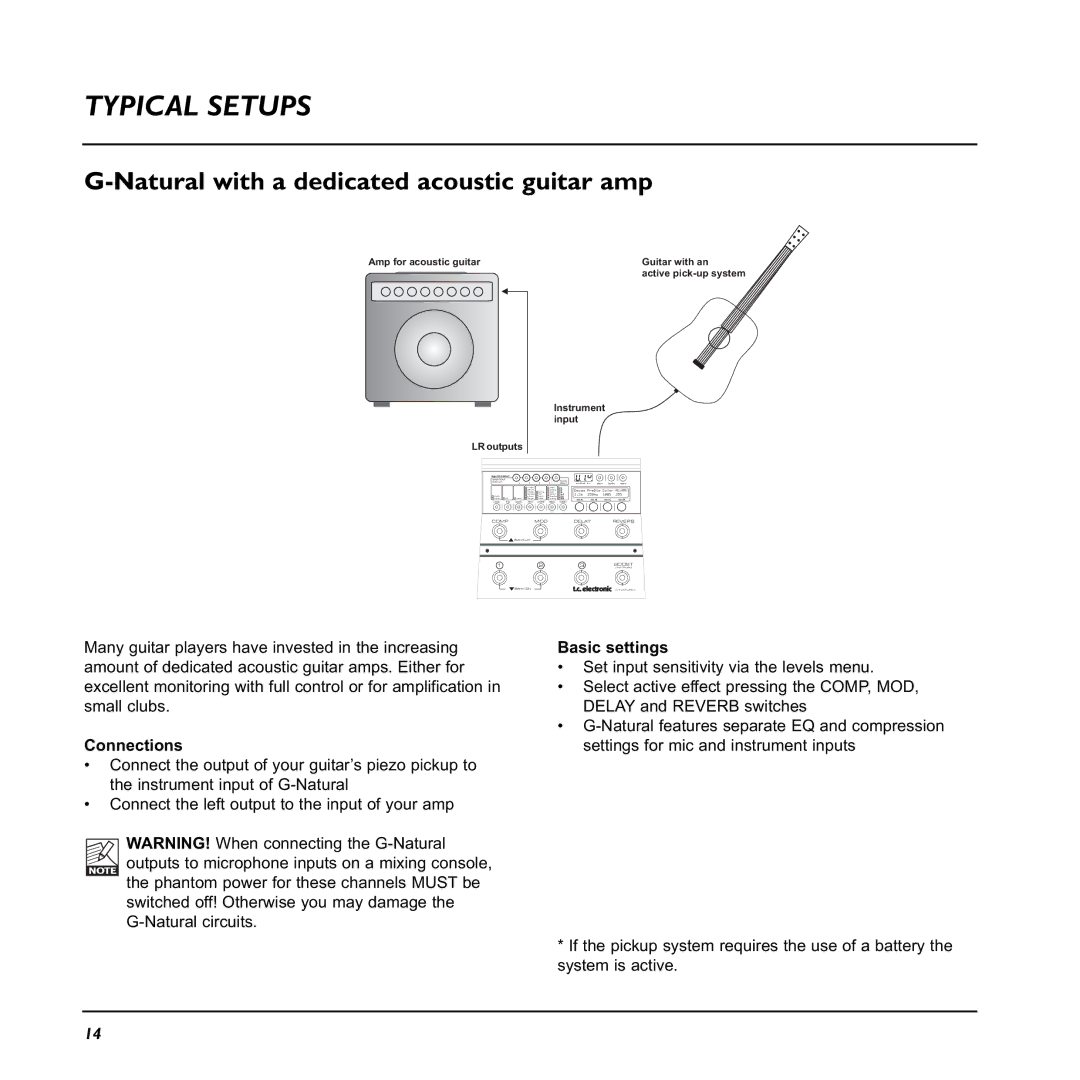
TYPICAL SETUPS
G-Natural with a dedicated acoustic guitar amp
Amp for acoustic guitar
LR outputs
Guitar with an
active
Instrument input
algorithm select |
|
|
|
|
|
|
|
| |
VARIATIONS |
| 1 | 2 | 3 | 4 | factory |
|
|
|
|
| default | store | levels | menu | ||||
|
|
| thicken |
| clean |
|
|
|
|
|
|
| detune |
| analog | Decay PreDly Color | MixMM | ||
|
|
| vibrato | spring | tape | ||||
|
|
| tremolo | hall | dynam | 1.2s | 250ms | 100% | 25% |
studio |
|
| chorus | room | reverse | ||||
stomp | EQ | boost | flanger | plate | p.pong | edit A | edit B | edit C | edit D |
comp | EQ | boost | mod | reverb | delay | subdiv |
|
|
|
COMP |
|
| MOD |
| DELAY | REVERB | |||
![]()
![]() BANK UP
BANK UP
1 | 2 | 3 | BOOST |
/TAP TEMPO | |||
| BANK DN |
| G•NATURAL |
Many guitar players have invested in the increasing amount of dedicated acoustic guitar amps. Either for excellent monitoring with full control or for amplification in small clubs.
Connections
•Connect the output of your guitar’s piezo pickup to the instrument input of
•Connect the left output to the input of your amp
WARNING! When connecting the
Basic settings
•Set input sensitivity via the levels menu.
•Select active effect pressing the COMP, MOD, DELAY and REVERB switches
•
*If the pickup system requires the use of a battery the system is active.
14
